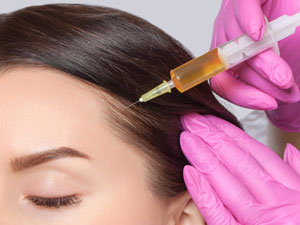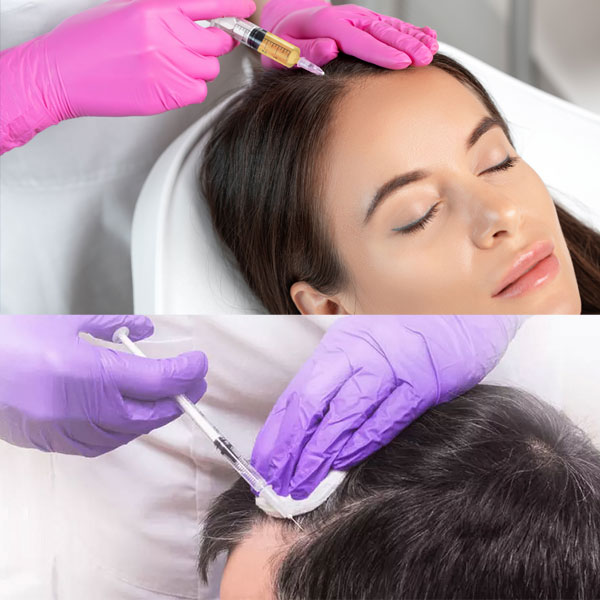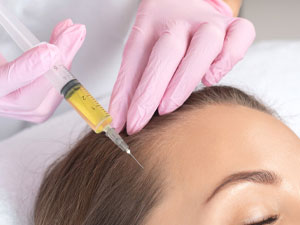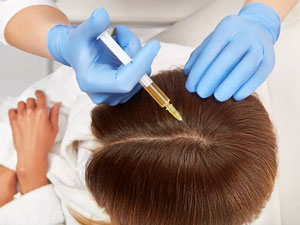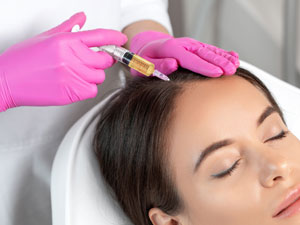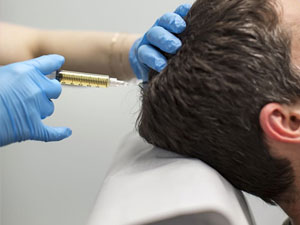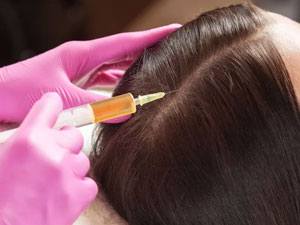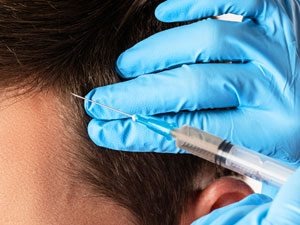Why Choose Us
Our board-certified cosmetic surgeons are dedicated to providing safe, beautiful, and natural-looking results through our personalized cosmetic treatments. You can expect the team at Youthful New You to make sure you are their number one priority. We take pride in helping our patients look and feel the way they’ve always wanted.
What Are the Benefits of PRP for Hair Loss?
PRP for hair loss is a cost-effective and simple non-surgical treatment that can provide substantial improvement in hair growth and thickness along with the following benefits:
UNLIKE HAIR TRANSPLANTS, PRP IS A NON-INVASIVE HAIR RESTORATION SOLUTION.
PRP injections can help you regrow hair without needing painful and tedious hair transplant procedures. Minor bruising and redness at the injection site should resolve quickly.
PRP THERAPY PROMOTES NATURAL HAIR GROWTH.
Hair loss treatment with PRP is virtually undetectable, so no one will know you’re undergoing therapy unless you tell them.
PRP GETS TO THE ROOT OF YOUR HAIR LOSS.
One of the most significant benefits of PRP therapy is that it stimulates inactive hair follicles to trigger new, natural, long-lasting hair growth.
PRP TREATMENTS CAN BE INDIVIDUALIZED.
When it comes to hair loss treatment, one size does not fit all, and PRP therapy for hair loss is completely customizable. Whether you are concerned with overall hair thinning, a receding hairline, or balding, our doctor can evaluate your hair loss and create a PRP treatment plan. This care may also include microneedling to address your unique needs and deliver the best results possible.
HAIR LOSS TREATMENT WITH PRP IS CONVENIENT.
While hair transplants can be invasive and time-consuming, PRP therapy for hair loss is easy and pain-free. A treatment session typically takes about 45 minutes with sessions that can be completed during your lunch break.
Am I a Candidate for Hair Loss Treatment With PRP?
PRP for hair loss works best on younger individuals who address their condition early, while hair follicles are still alive but have become dormant. Hair follicles can die due to old age, poor nutrition, illness, and other reasons.
If you are a heavy smoker, take blood thinners, or have a medical condition such as cancer, liver disease, diabetes, chronic infections, or low platelet count, PRP therapy may not be suitable for you.
What Is Discussed During a Hair Loss Consultation?
After obtaining your medical history, listening carefully to your hair loss concerns, and discussing your goals, our physician will explain your hair loss treatment options, including the PRP procedure. You will also be provided with an accurate cost estimate.
How Does PRP for Alopecia Work?
While many medical technologies work, we don’t always have the definitive answer as to why or how. When it comes to the healing properties of PRP, science has provided some answers.
PRP treatment increases blood supply to hair follicles and has been shown to increase hair thickness and growth due to its regenerative cell-renewal properties.
PRP for hair loss treatments involves three steps:
- The blood draw: Your provider will draw blood from the arm. Your blood is put into a centrifuge that spins the blood to separate the platelet-rich plasma from the red blood cells.
- Centrifuge isolation of PRP: The centrifuge separates the fluids in the blood and takes around 10 to 20 minutes. The goal is to isolate the PRP from the red and white blood cells, which is a yellowish or straw-like color.
- PRP scalp injections: The isolated PRP is injected into precise areas of the scalp to stimulate hair growth.
Your specialist may perform the “hair pull test” before each PRP treatment session. The hair pull test evaluates the extent of hair loss by pulling a bundle of hair in four scalp locations, and if more than ten percent of hairs are removed, the hair pull test is positive for alopecia.
The test is repeated regularly to monitor hair loss progression. A 2014 study on PRP for hair loss found a “significant reduction in hair loss was observed between the first and fourth injection.”
Most patients require four to six treatments spaced several weeks apart. Once you reach your desired results, maintenance treatments can be done every few months.
What Other Procedures Can I Combine With PRP for Hair Loss?
We offer a wide range of surgical and non-surgical procedures. PRP can also be used to rejuvenate your skin with our advanced microneedling services and is an excellent option to combine with your hair-loss treatment. Other non-surgical procedures include:
- Laser energy treatments and peels
- Injectable fillers & BOTOX® Cosmetic
- Acne scar treatment
What Are Your Concerns?
WHAT IS HAIR LOSS TREATMENT WITH PRP RECOVERY LIKE?
There’s little to no downtime involved with this PRP treatment, though some patients wait a day to return to work. Using your own blood reduces certain risks; infection, blood vessel or nerve injury, and adverse reactions to local anesthesia can occur.
IS PRP TREATMENT FOR HAIR LOSS PAINFUL?
PRP is designed to cause targeted inflammation, so you may experience some tenderness, which will subside in time. Taking Motrin or ibuprofen (NSAIDs) is not advised because it can reduce the effectiveness of the treatment.
DOES PRP TREATMENT CAUSE SCARS?
As long as a qualified and experienced provider is providing your treatment, you are highly unlikely to experience any scarring with PRP hair treatments.
How Much Does PRP Treatment for Hair Loss Cost?
The cost of treatment for hair loss with PRP varies with each patient and depends on several factors. We will provide an accurate cost quote during your consultation.
